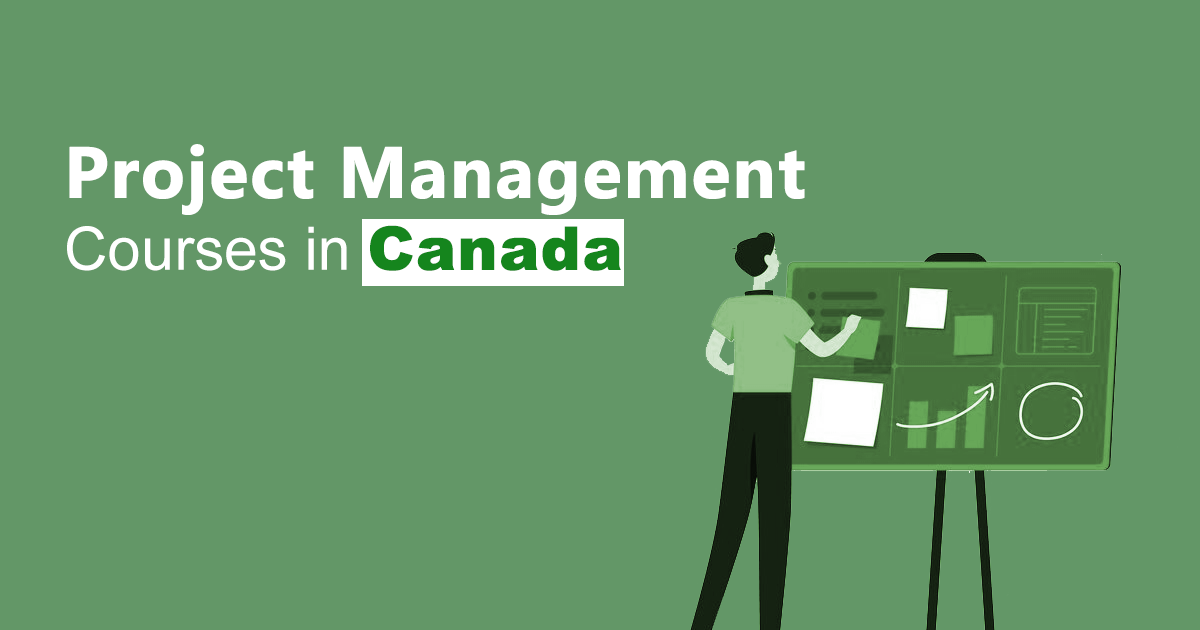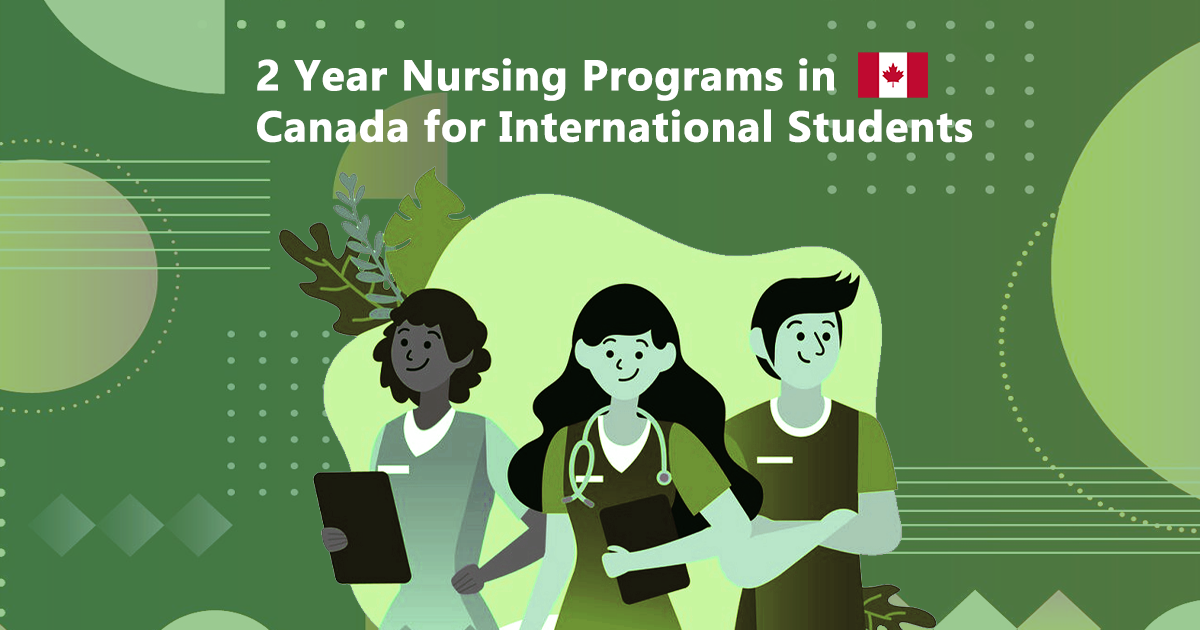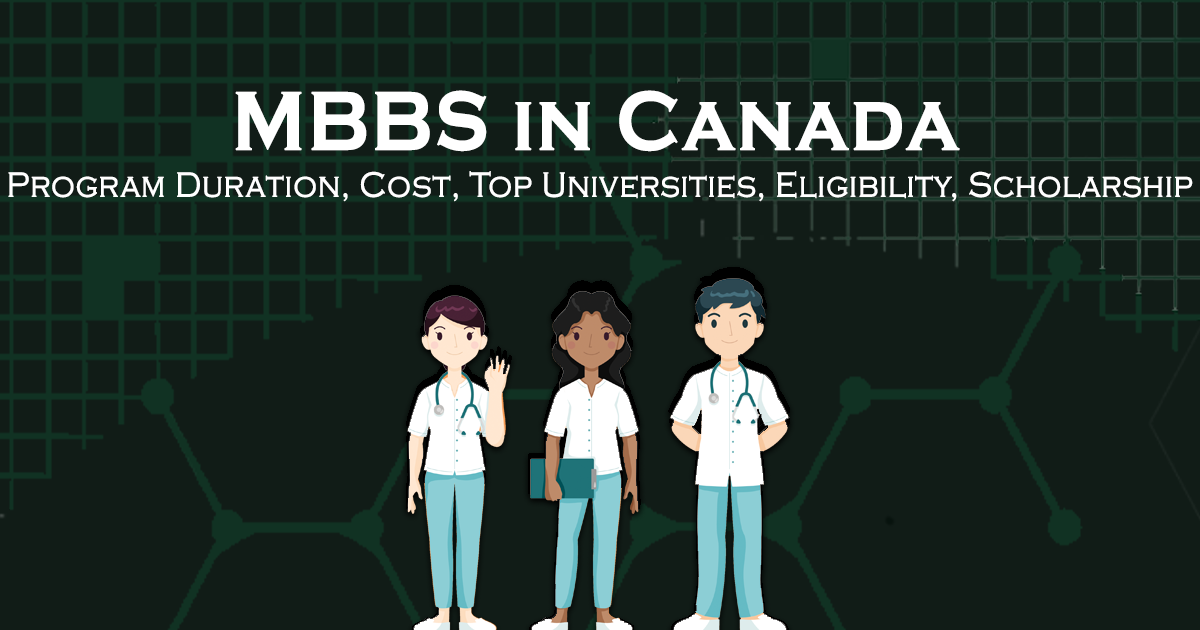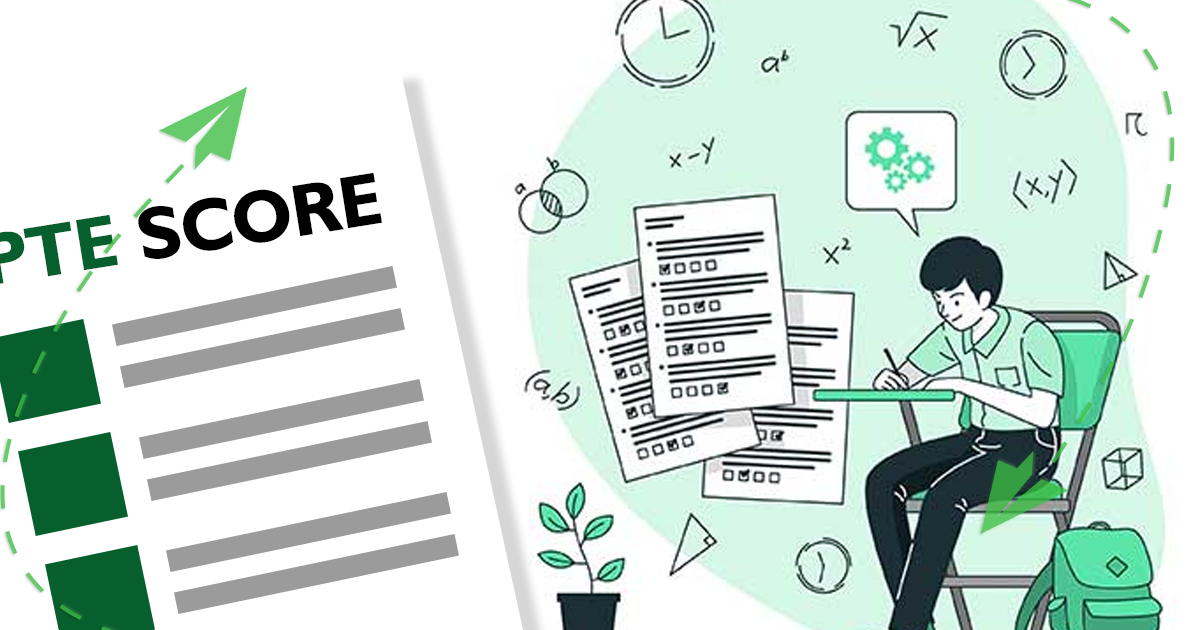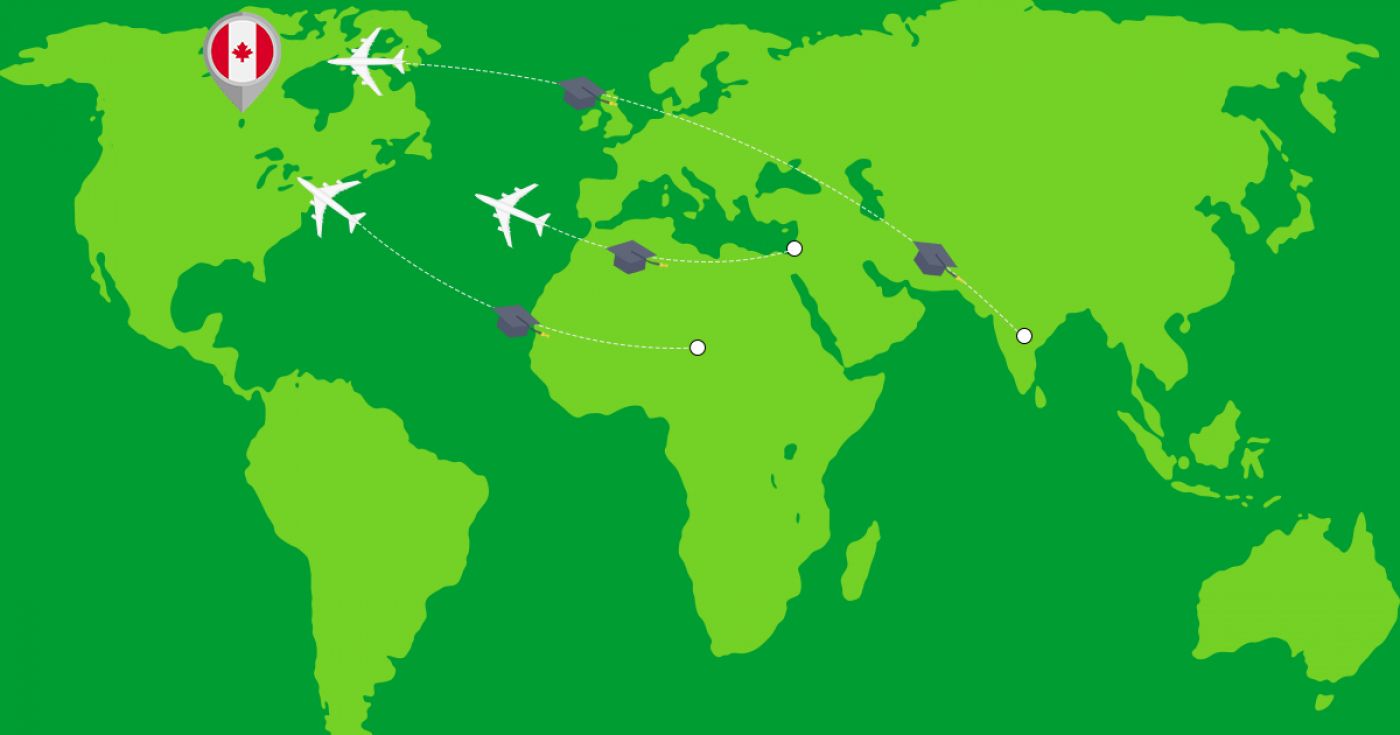Graduate Certificate in Blockchain Development (Co-op)
at George Brown College - Casa Loma Campus Canada
Overview
Looking to transition careers or fill in the gaps to gain advanced blockchain development skills?
This unique Blockchain Development program at George Brown College in Toronto focuses on designing and implementing decentralized applications by leveraging blockchain technology. The three-semester program is designed to also thoroughly cover full stack development to give potential students all the tools they need to succeed in this emerging and exciting field.
This program has been developed with the support of blockchain industry professionals and is taught in a full-time executive format of approximately 20 hours per week of study over a 26-week time period. Co-op and work integrated learning opportunities are available during the third semester of the program. It is the first certificate in blockchain offered by a Canadian college.
The skills you’ll learn include:
- Smart contracts
- Design patterns for blockchain
- Distributed applications (dApps)
- Full stack development
- Blockchain architecture, security practices, laws and regulations, and more
Your Field Education Options
During the third semester of the program, students may choose whether to apply for a Co-op position or take a Work Integrated Learning course which includes an industry-sponsored project.
To be eligible for co-op, a student must complete all Semester 1 and Semester 2 courses. As well, an overall GPA of 3.0 must be achieved.
Program Learning Outcomes
- The graduate has reliably demonstrated the ability to:
- Communicate essential concepts related to blockchain technology and its industry applications.
- Implement best security practices for blockchain solutions.
- Design cryptoeconomic models to solve business problems.
- Design the architecture of decentralized applications and systems.
- Develop decentralized applications leveraging blockchain technology.
- Explain the legal implications, regulations, and industry standards that are relevant to blockchain technology.
- Apply IT project management principles and best practices.
- Contribute to the field and blockchain community through various open source projects, partnerships, and community involvement.
30
Application Processing Days
Post Graduate
Program Level
Fact & Figures
Full Time On Campus
Study Mode
12
Duration
George Brown College - Casa Loma Campus
Location
Graduate Certificate in Blockchain Development (Co-op) Assistant Fee
$23220
Tuition Fee
$12000
Average Cost of Living
$95
Application Fee
6
Backlogs Allowed
Graduate Certificate in Blockchain Development (Co-op) Admissions Requirements
- Minimum Level of Education Required: Diploma or Bachelor's Degree in Information Technology, Computer Science or a related field.

Get superfast admissions at top Graduate Certificate in Blockchain Development (Co-op) institutes in 2024
Benefits of choosing
➤Admission’s guaranteed at Top institutes across the world.
➤Enjoy exclusive application fee waiver’s with Edmissions.
➤Unlimited FREE Counselling sessions with Edmission’s
Experts
➤Get Tips from industry veterans to crack the IELTS exam in 1
week.
➤Assistance with scholarships, loans, forex, student accommodation and visa guidance.
Work Permit Canada
Students who wish to work in Canada require a work permit to do so. A student in Canada can work part-time during the course of his studies and full-time during holidays and semester breaks and post the completion of their course/program.
Rules for getting a part-time work visa in Canada
You can also work part-time on campus at your university.
Work Permit
Duration
Your part-time work permit will be valid for as long as you have a valid study permit.
Working Hours
20 Hours/Week
As a full-time student, you can work for a maximum of 20 hours a week. However, you can work full- time during holidays and breaks.
Document Required to Work in Canada
List
To apply for a work permit, you will need a study permit that mentions that you are allowed to work part-time on campus.
Social Insurance Number
Study Permit
You will need a Social Insurance Number (SIN) to Service Canada. if you wish to work in Canada during the course of your studies. To apply for the same, you need a valid study permit, and you should be a full- time student at a recognized university.

You can work part-time off-campus if you are studying in the Quebec province.
Duration of Work Permit Canada
Your part-time work permit will be valid for as long as you have a valid study permit.
Work Hours Canada
As a full-time student, you can work for a maximum of 20 hours a week. However, you can work full- time during holidays and breaks.
Document Required to Work in Canada
To apply for a work permit, you will need a study permit that mentions that you are allowed to work part-time on campus.
Social Insurance Number
You will need a Social Insurance Number (SIN) to Service Canada if you wish to work in Canada during the course of your studies. To apply for the same, you need a valid study permit, and you should be a full- time student at a recognized university.
Working after completing your course
In Canada, you will need a work permit to get a full-time job in Canada after finishing your studies. You chose a work permit like the Post-Graduation Work Permit (PGWP) if you wish to stay back in Canada and work full-time.
Visit Government of Canada Website for more detail
Post-Graduation Work Permit (PGWP)
The Post- Graduation Work Permit (PGWP) allows you to work for three years in Canada if you have completed a two years degree or more.
Application
how can i apply
You can either apply online or download the form and mail the application along with the required documents. Pay your fee and then wait for the decision to come.
Application Documents Required
List
To apply for the work visa, you need a degree from a recognized and accredited Canadian University along with an intention to stay and work in Canada only temporarily.
When to Apply?
One can apply for the full-time work permit in the first three months post the completion of their course during which the study permit is still valid.
How long does it take?
90 days
You will have to wait for 90 days for the decision on your work permit.
Duration
3 Years
The work permit is valid for 3 years if you have completed a two years degree program or more.
Fees
CAD 255
The fee for the work permit is CAD 255 plus the holder fee and the work permit processing fee.
Monthly Wages
CAD 1,600
An applicant is guaranteed a minimum salary of CAD 1,600 per month while working in Canada. This amount though varies on the job and the province you are working in.
Work Hours Canada
No Limit
There is no maximum limit, and you can work for as many hours as you want on the full-time work permit.

Required Documents
List
To apply for the work visa, you will need the following documents:
- Forms: IMM 5710, IMM 5476 and IMM 5475;
- Graduation Proof
- Proof of payment of work permit fees
- Copies of your travel and identification documents, passport pages and current immigration document.
Till a decision is made on your work visa, you can continue to work full time. All you need to have is your completed degree, should have applied for the permit before the expiry of your study permit and you should be allowed to work off-campus.
Information
Disclaimer
The information provided about the work permit is true and complete to the best of our knowledge. All recommendations are made without any guarantee on the part of the author or the publisher. The author and the publisher, therefore, disclaim any liability in connection to and with the use of this information.
Detailed Program and Facts
30
Application Processing Days
Full Time On Campus
Program Intensity
Post Graduate
Program Level
12
Duration
Study Visa
Student Visa For Canada
Any student who wishes to study in Canada requires a student visa. Some of the essential information for the application process is given below.
When Should I Apply?
4 to 6 months
Ideally, one should apply for the study permit at least 4 to 6 months before the commencement of your course/program.
Bank Account
No Need!
There is no need for a blocked bank account to apply for a student visa to Canada.
Duration of visa
Course Duration + 3 Months
The student visa is valid for the entire period of your course plus three months.
Time to Wait for Visa
35 Days
It takes time. It might take up to 35 days post your interview for the application process to complete and for you to finally receive your visa.
Appointment
Required
It varies from applicant to applicant, but one may have to take part in one or two visa appointments, namely a medical examination and a visa interview.
How you can apply
Application Process
An applicant can either apply online or offline by visiting a visa application centre and submitting their documents. After the analysis of your application, you might be called for an interview.
Fee
Visa Fee
The visa application fee for Canada is CAD 150.
Minimum Funds
833 CAD, 917 CAD
You require a minimum monthly amount to be deposited into your account to prove that you can sustain yourself while studying in Canada. If you are studying in Quebec, you need to have a monthly minimum of CAD 917, and if you are studying in a province except for Quebec, you need to have a minimum of CAD 833 per month.
Any other expenses
Required
You will have to pay a medical examination fee and a visa application service fee to the tune of CAD 15 if you visit a visa application centre to apply for your visa.

Medical Examination
Required
One has to undergo a series of medical examinations to be deemed fit for a student visa of Canada. The tests mostly include blood and urine tests, chest x-rays and other organ checkups.
Language Skills
Not Required
one doesn’t need to prove their language skills in applying for a Canadian Visa.
Disclaimer: The information provided about the work permit is true and complete to the best of our knowledge. All recommendations are made without any guarantee on the part of the author or the publisher. The author and the publisher, therefore, disclaim any liability in connection to and with the use of this information.
Other Courses by George Brown College - Casa Loma Campus,Canada
Computer Science & IT
Advanced Diploma in Computer Systems Technology
The Computer Systems Technology program is designed with extensive input from industry and offers two optional specializations in its third year. The Networking specialization focuses on network security, voice-over-IP (VoIP) and wireless LANs. The Systems specialization focuses on mail server administration, content management systems (Collaboration), database administration and computer security. Both specializations include core courses on infrastructure virtualization (through the VMWare IT Academy) and cloud computing, along with best practices in Information Technology.
The three-year Computer Systems Technology program is designed with extensive industry input and offers two optional specializations in its third year:
The Networking specialization focuses on network security, voice-over-IP (VoIP) and wireless LANs.
The Systems specialization focuses on mail server administration, content management systems (Collaboration), database administration and computer security.
Both specializations include core courses on infrastructure virtualization (through the VMWare IT Academy) and cloud computing, along with best practices in Information Technology (IT).
George Brown College continues to invest in up-to-date networking, wireless, radio frequency, VoIP and security lab equipment, so that all students gain hands-on experience in installation and configuration of equipment ranging from small offices all the way to enterprise-class hardware and software. This investment, along with the hands-on teaching environment, was recognized by Cisco when the college was designated an Area Support Centre and Instructor Training Centre, and became part of a very select group of Cisco Networking Academies in Canada.
In the third year of the program, students will be involved, hands-on, in real-life projects or case studies. These may be completed independently, in conjunction with an industry partner, or George Brown's Office of Research and Innovation, and may include developing proposals and working in teams to plan, set schedules and achieve specific goals in the field of information technology. Through some of these projects, George Brown students have recently helped develop IT solutions for hospitals, large corporations and major IT and telecommunications service providers, including Bell Mobility, Rogers Communications, Cogeco Data Systems and many other well-known companies in the Greater Toronto Area.
This program covers all courses of the official Cisco CCNA Routing & Switching curriculum. The curriculum also prepares students to write several other examinations leading to industry certifications, such as the Certified Wireless Network Administrator (CWNA) and Cisco Certified CyberOps Associate.
Program Learning Outcomes
The graduate has reliably demonstrated the ability to:
- Identify, analyze, design, develop, implement, verify and document the requirements for a computing environment.
- Diagnose, troubleshoot, document and monitor technical problems using appropriate methodologies and tools.
- Analyze, design, implement and maintain secure computing environments.
- Analyze, develop and maintain robust computing system solutions through validation testing and industry best practices.
- Communicate and collaborate with team members and stakeholders to ensure effective working relationship.
- Select and apply strategies for personal and professional development to enhance work performance.
- Apply project management principles and tools when responding to requirements and monitoring projects within a computing environment.
- Adhere to ethical, social media, legal, regulatory and economic requirements and/or principles in the development and management of the computing solutions and systems.
- Investigate emerging trends to respond to technical challenges.
- Analyze, plan, design, implement and administer computer systems and cloud solutions.
- Research, design, deploy, configure, troubleshoot, maintain, upgrade and decommission computing system infrastructures.
- Select and apply scripting tools and programming languages to automate routine tasks.
- Install, monitor, optimize and administer a database management system in response to specified requirements.
- Design, implement and administer technical support processes for computing system infrastructures that aligns with industry best practice.
36 month
Duration
$ 15190
Tuition
Skilled Trades
Certificate of Welding Techniques
Employment opportunities in the Welding trade span several industries including transportation, petro chemical, oil and gas, aerospace, fabrication, manufacturing, pipelines, mining and construction.
George Brown’s Welding Techniques program prepares students with practical, hands-on experience that applies the technical theory and elements of the welding field. Students articulate their technical and essential employability skills through an e-portfolio, based on skill development throughout the program.
At the end of this intense, two-semester program, students will have the opportunity to challenge the shielded metal arc weld test, in accordance with CSA W47.1/W59 standards, in a position(s) of their choosing through the Canadian Welders Bureau. (This test will be voluntary and at an extra cost to the student.)
This experiential program will provide you the skills to master five of the most common types of welding processes:
- Shielded Metal Arc Welding (SMAW): This process uses a consumable electrode covered with flux. It is the primary type of welding used in the maintenance and repair industry. Arc welding is usually used to weld iron and steel, although it can also be used for alloys (aluminum, nickel, etc.).
- Gas Metal Arc Welding (GMAW): This welding process uses electricity to melt and join pieces of metal together. It is generally regarded as one of the easiest types of welding to learn. It is also called Gas Metal Arc Welding (GMAW). It can be used to weld a variety of metals such as carbon steel, stainless steel, aluminum, magnesium, copper, bronze, etc.
- Gas Tungsten Arc Welding (GTAW): The process uses a non-consumable tungsten electrode that delivers the current to the welding arc. The tungsten and weld puddle are protected and cooled with an inert gas, typically argon or helium. It is most commonly used for welding stainless steel and non-ferrous metals like aluminum, magnesium and copper alloys.
- Plasma Arc and Oxyfuel Cutting: This process utilizes an electrode and compressed gas, forced at high speeds through a nozzle, usually copper, to cut metal, primarily mild steel, stainless steel and aluminum. Oxyfuel cutting uses fuel gases combined with oxygen to cut metals, usually steel.
- Fabrication: Metal fabrication is the building of metal structures by cutting, bending, and assembling processes. It is a value added process that involves the construction of machines and structures from various raw materials.
Program Learning Outcomes
- The graduate has reliably demonstrated the ability to:
- Perform work responsibly and in compliance with the Occupational Health and Safety Act and industry processes and procedures, including demonstrating learned knowledge of WHMIS.
- Interpret engineering drawings and blueprints to produce basic graphics and welding projects as required by industry.
- Select, plan, and demonstrate sustainable metal fabrication operations using industrial metal fabrication machinery and emerging technologies.
- Perform basic technical measurements and welding functions accurately, using appropriate equipment and welding techniques.
- Create welds on various types of materials and joints in the major welding positions to industrial standards and codes.
- Use shop tools and equipment to manufacture, assemble, maintain and repair components according to required specifications and industry standards.
- Interact effectively and professionally in shop environments, both independently and with fellow workers and other tradespeople.
- Assess weld quality and implement corrective action where required to follow quality control and quality assurance procedures and meet organizational standards and requirements.
- Create a professional development plan that addresses one’s strengths and areas for growth in the greater context of the welder profession.
12 month
Duration
$ 15190
Tuition
Creative Arts & Design
Advanced Diploma in Interior Design Technology (Co-op)
The three-year Interior Design Technology advanced diploma program prepares you to be an Interior Design Technologist. You will be a valuable member of the design team for building retrofits, renovations and new construction, contributing to the technical design of building interiors by design development of plans, elevations, renderings and 3D models.
Learning in state-of-the-art interior design studios with the most up-to-date equipment and software, you will develop a thorough knowledge of interior design and technical design skills.
Through the application of interior design theory, you will learn how to effectively communicate the applied and technical principles of interior design. As a graduate, your area of specialization might include, but is not limited to, the following:
- Bathroom and kitchen design/build
- Commercial, retail or manufacturing technical sales
- Fitments, colour or texture finishes selection and consultations
- 2D and 3D computer drawing, design, rendering and modeling
- Sustainable interior design practices for commercial, retail and residential
Note: If you enrol in the program in January, you are required to complete semester 2 in the summer (May to August) of the same year in order to continue into semester 3 in the fall.
Program Learning Outcomes
- The graduate has reliably demonstrated the ability to:
- Analyze a client's needs and goals by using research methodology and techniques.
- Prepare a design proposal.
- Analyze design components by using the creative process.
- Prepare an appropriate design concept of three-dimensional form which meets the criteria of a given design project by using the creative process.
- Execute appropriate presentation techniques to communicate the design concept.
- Prepare a design which reflects the concept by using current and relevant information.
- Communicate to the client the proposed design solution for approval.
- Prepare documentation needed for the implementation of the design.
- Collaborate as part of the management team, as the client's agent, in the implementation of a design project to ensure that the project reflects the design solution.
- Evaluate completed design solutions.
36 month
Duration
$ 15190
Tuition
Engineering & Technology
Advanced Diploma in Civil Engineering Technology (Co-op Optional)
The Civil Engineering Technology advanced diploma program is a three-year program that focuses on the planning, design and construction of roads, bridges, tunnels, sub-divisions, buildings, municipal services and heavy infrastructure. Students learn to ensure projects are functional, economical and meet standards and codes. There is a blend of lectures, laboratories and tutorials, with a focus on real drawing sets. There is an option for co-op.
The Civil Engineering Technology advanced diploma program includes:
- Designing reinforced concrete structures, storm, water and sanitary systems, roads and steel-framed structures.
- Interpreting construction drawings and specifications for various types of projects through extensive practical training from project drawing sets.
- Estimating, bidding, scheduling and managing/supervising projects using the latest software.
- Health and safety, site management and quality management on construction sites.
- Risk analysis and value analysis for construction projects.
- Types of contracts used by the construction industry as well as the legal aspects of construction.
- Business management techniques to pre-qualify projects based on expected returns, to create and manage a construction company and to understand the financial statements involved in running a construction business.
Program Learning Outcomes
The graduate demonstrates the ability to:
- Develop and use strategies to enhance professional growth and ongoing learning in the civil engineering field.
- Comply with workplace health and safety practices and procedures in accordance with current legislation and regulations.
- Complete duties and monitor that work is performed in compliance with contractual obligations, applicable laws, standards, bylaws, codes and ethical practices in the civil engineering field.
- Promote and carry out sustainable practices in accordance with contract documents, industry standards and environmental legislative requirements.
- Facilitate collaboration and interaction among the project team and project stakeholders to support civil engineering projects.
- Collect, process, analyze and coordinate technical data to produce written and graphical project-related documents.
- Use industry-specific electronic and digital technologies to support civil engineering projects.
- Participate in the design and modelling phase of civil engineering projects by applying engineering concepts, technical mathematics and principles of science to the review, production and/or modification of project plans.
- Contribute to the scheduling, coordination and cost estimation of civil engineering projects and monitor their progression by applying principles of construction project management.
- Coordinate and perform quality control testing and evaluate equipment, materials and methods used in the implementation and completion of civil engineering projects.
- Apply teamwork, leadership, supervision and interpersonal skills when working individually or within multidisciplinary teams to complete civil engineering projects.
36 month
Duration
$ 15190
Tuition
Engineering & Technology
Advanced Diploma in Electromechanical Engineering Technology - Building Automation
Building automation systems don't just control the basics: they regulate airflow, monitor energy use and are integrated with security, lighting and other building systems to deliver comfort, safety and energy efficiency. Today’s buildings are increasingly complex, and they differ in use and size, but also in operating hours, comfort levels and environmental conditions. Offices, residences, hotels, schools and administrative buildings all have different requirements. Optimal building services technology is the result of appropriate systems design and integration during planning, construction, commissioning and operation.
This advanced diploma program in Building Automation provides students the technical skills they need for success in the job market. Students learn to:
- Install, program, adjust and maintain building automation systems
- Program and install sensors, actuators and controllers
- Collect data for use in real-time or for archiving in a central server
- Work with building software platforms that interconnect different systems
Graduates will have a diverse set of skills and abilities that will also prepare them for "green" careers focused on energy efficiency, renewable energy and the environment. This program provides a skill set that is in high demand in both the construction industry and the controls and automation industry.
Industry Skills
- Safety practices in the installation and troubleshooting of HVAC/R systems, including applicable codes and standards of the NEC, ASHRAE, OSHA, EPA and other regulatory bodies.
- Basic HVAC/R processes and the function, layout and operation of commercial HVAC/R systems.
- Functions, operating characteristics and applications of the control loops and control modes in digital, analog and pneumatic commercial control systems.
- Blueprints and manufacturer’s technical instructions for installing or servicing a sensor, controller, actuator and related relays and power supplies.
- General-purpose software and specific building automation software that monitors and controls HVAC/R and electrical systems.
- Various BAS controls and systems, including DCS, PLC, PAC and SCADA.
- Functions of network devices and protocols, such as a bridge, router, gateway, hub, firewall, twisted pair, Ethernet, TCP/IP, Zigbee, WiFi, BAS/IP and BacNet.
- Emerging green technologies, such as solar, wind and hydronic, and how they can be integrated into building systems and residential applications.
Program Learning Outcomes
The graduate has reliably demonstrated the ability to:
- Fabricate and build electrical, electronic, and mechanical components and assemblies in accordance with operating standards, job requirements, and specifications.
- Analyze, interpret, and produce electrical, electronic, and mechanical drawings and other related technical documents and graphics necessary for electromechanical design in compliance with industry standards.
- Select and use a variety of troubleshooting techniques and equipment to assess, modify, maintain, and repair electromechanical circuits, equipment, processes, systems, and subsystems.
- Modify, maintain, and repair electrical, electronic, and mechanical components, equipment, and systems to ensure that they function according to specifications and to optimize production.
- Design and analyze mechanical components, processes, and systems by applying engineering principles and practices.
- Design, analyze, build, select, commission, integrate, and troubleshoot a variety of industrial motor controls and data acquisition devices and systems, digital circuits, passive AC and DC circuits, active circuits and microprocessor-based systems.
- Install and troubleshoot computer hardware and programming to support the electromechanical engineering environment.
- Analyze, program, install, integrate, troubleshoot and diagnose automated systems including robotic systems.
- Establish and maintain inventory, records, and documentation systems to meet organizational and industry standards and requirements.
- Select and purchase electromechanical equipment, components, and systems that fulfill job requirements and functional specifications.
- Specify, coordinate, and apply quality-control and quality-assurance programs and procedures to meet organizational standards and requirements.
- Work in compliance with relevant industry standards, laws and regulations, codes, policies, and procedures.
- Develop strategies for ongoing personal and professional development to enhance work performance and to remain current in the field and responsive to emergent technologies and national and international standards.
- Contribute as an individual and a member of an electromechanical engineering team to the effective completion of tasks and projects.
- Design and analyze electromechanical systems by interpreting fluid mechanics and the attributes and dynamics of fluid flow used in hydraulic and fluid power systems
- Contribute to project management through planning, implementation and evaluation of projects, and monitoring of resources, timelines, and expenditures as required.
36 month
Duration
$ 15190
Tuition
Creative Arts & Design
Diploma in Fashion Business Industry
The Fashion Business Industry two-year diploma program at George Brown College's School of Fashion and Jewellery in Toronto gives students an introduction to all aspects of the fashion industry, from product knowledge to marketing and small business management.
The small to medium-sized business enterprise is a flourishing sector of the fashion industry and represents a great opportunity for entry into the fashion world. Smaller companies require employees who possess a variety of management skills to manage a business from the start-up stage to more developed business models. Students will be prepared for the roles and develop skills essential for the operation of a successful small fashion business. The entrepreneurial aspect of this program guides students through the process of developing a comprehensive business plan, which is essential to start a new business or manage an existing business.
Students will gain an understanding of textiles, garment construction, quality criteria and apparel merchandising. They will also learn to apply marketing, accounting, financial and other business concepts necessary for the decision-making they will encounter in their future careers.
Program Learning Outcomes
- The graduate has reliably demonstrated the ability to:
- Use basic apparel drafting and construction skills and industrial sewing machines to complete apparel products.
- Use standard fashion industry computer software for business and for design development.
- Manage daily operations, resources, visual merchandising and customer relationships to ensure profitability in a retail enterprise.
- Develop a business and finance plan for a small apparel enterprise that reflects awareness of market conditions, resources required and cash flow.
- Apply appropriate buying, merchandising and accounting practices to support small business operations in the fashion industry.
- Apply supply chain management and logistics to operate a successful fashion business.
- Develop, communicate and implement a marketing plan by combining marketing research, strategies and tactics.
- Analyze economic, fashion and industry trends to make business decisions in small and medium-sized apparel enterprises.
- Evaluate products by applying quality control processes to meet appropriate standards.
- Identify textile materials, asses their suitability and compatibility, and select accordingly for end use.
24 month
Duration
$ 15190
Tuition
Rising fuel costs, indoor air quality and climate change are all factors in raising awareness of the true cost of energy, and the need for energy-efficient building environmental system design, construction and maintenance.
This program has been developed to address the current and future needs of the heating, ventilation, air conditioning and refrigeration (HVAC/R) industry. In the first two years you will study residential and some light commercial systems. In the third year there is an additional focus on commercial systems.
You will develop a firm understanding of the factors involved in designing, building, controlling and maintaining energy-efficient building environmental systems for a wide variety of requirements.
The program covers the basics of air system and hydronic (water) system theory, required to design distribution systems and select appropriate fans, pumps, heating and cooling plants, and system controls for larger buildings.
The program follows industry-standard design practices for environmentally responsible and energy-efficient residential, commercial and industrial systems, as established by the Heating, Refrigeration and Air Conditioning Institute (HRAI), the American Society of Heating, Refrigeration and Air Conditioning Engineers (ASHRAE) and the Canada Green Building Council.
Program Learning Outcomes
- The graduate has reliably demonstrated the ability to:
- Relate effectively to heating, ventilation, air conditioning and refrigeration supervisors, coworkers and customers.
- Comply with applicable acts, regulations, legislation, and codes to maintain personal and public safety.
- Solve scientific, mathematical, and engineering problems related to designing, operating, and installing energy systems for commercial and industrial complexes.
- Prepare and analyze detailed drawings, and compile technical specifications for energy systems.
- Design, operate, and install energy systems for commercial and industrial complexes.
- Develop strategies for ongoing personal and professional development that lead to enhanced work performance and career opportunities, and keep pace with industry changes.
36 month
Duration
$ 15190
Tuition
Creative Arts & Design
Diploma in Dance Performance
This rigorous and comprehensive two-year Dance Performance diploma program provides you with the necessary skills to launch a career in dance. As a graduate, you will be a classical ballet and/or contemporary dancer with the professionalism, technical expertise and industry contacts required to pursue a career in dance. With a choice of specialty in classical or contemporary dance, students train in ballet, modern and jazz with studies in acting, vocal, repertoire and composition to elevate their overall performance quality and marketability.
There are two streams for students to specialize in either classical or contemporary dance:
- The Classical stream is for intermediate/advanced ballet students and includes more advanced training in ballet and pointe.
- The Contemporary stream is for intermediate-level ballet students and includes additional contemporary training and the option of less advanced pointe classes.
Program Learning Outcomes
- The graduate has reliably demonstrated the ability to:
- Perform advanced classical ballet and modern dance technique in choreographed solo and ensemble productions.
- Perform jazz dance technique in choreographed solo and ensemble productions.
- Sing at an intermediate level using pulse, rhythm and metre in both solo presentations and chorus productions.
- Create artistically expressive dramatic characterizations in a dance context at an advanced level in both solo and ensemble performances.
- Present self professionally at auditions and in industry environments through resumés, biographical backgrounds, and photographs to advance artistic and career opportunities.
- Develop self-knowledge and reflective practice to make informed artistic, pedagogical, personal development and career choices within the performing arts industry.
- Apply pedagogical skills and concepts to educate students in the areas of ballet, modern and jazz dance training.
24 month
Duration
$ 15190
Tuition
Rising fuel costs, indoor air quality and climate change are all contributing factors in raising awareness of the true cost of energy. There is a great need for energy-efficient building environmental system design, construction and maintenance.
In the Heating, Refrigeration and Air Conditioning Technician program students will:
- Develop the ability to size, install and maintain building environmental systems for the residential and light commercial sector.
- Gain solid skills and knowledge in design, operation and maintenance of environmental systems, in heating, ventilation, air conditioning and refrigeration (HVAC/R).
- Develop practical skills through hands-on experience, working on a wide range of furnaces, air conditioners, refrigeration equipment and other appliances in our labs.
- Gain competency with industry-ready skills in soldering, wiring and electric control circuitry and troubleshooting for HVAC and gas installations.
- Use computer-aided design software to assess building heating and cooling requirements, select appropriate equipment and develop HVAC system drawings and specifications for the residential market.
- The program follows industry-standard design practices for environmentally responsible and energy-efficient residential, commercial and industrial systems, as established by the Heating, Refrigeration and Air Conditioning Institute (HRAI), the American Society of Heating, Refrigeration and Air Conditioning Engineers (ASHRAE) and the Canada Green Building Council.
Note: When you enrol in the program in January, you are required to complete semester 2 in the summer (May to August) of the same year in order to continue into semester 3 in the fall.
Program Learning Outcomes:
- The graduate has reliably demonstrated the ability to:
- Relate effectively to heating, refrigeration, and air conditioning supervisors, coworkers, and customers.
- Work safely and in accordance with all applicable acts, regulations, legislation, and codes to ensure personal and public safety.
- Select and use a variety of heating, refrigeration, and air conditioning tools and equipment safely and properly.
- Solve math and applied science problems required to effectively install and maintain heating, refrigeration, and air conditioning systems, and associated components.
- Prepare and interpret electrical, mechanical, and piping drawings.
- Install, service, and troubleshoot heating, refrigeration, air conditioning systems, and associated components.
- Develop strategies for ongoing personal and professional development, that will lead to enhanced work performance and career opportunities, and keep pace with industry changes.
24 month
Duration
$ 15190
Tuition
Creative Arts & Design
Diploma in Fashion Techniques and Design
The Fashion Techniques and Design program prepares graduates for careers in garment manufacturing design rooms. This is a women's wear program that simulates, as closely as possible, the industry's standards, practices and facilities. You will use industrial machines and learn the essentials of technical illustration, pattern making, pattern grading and clothing construction. Additional core subjects include textiles, technical specifications and history of costume. Program electives allow you to select specific related subject areas, such as fashion show development, portfolio development, draping, lingerie, men's pattern drafting, leather apparel, knitwear and bridal and evening wear. Computer skills in Adobe Illustrator, pattern drafting and pattern grading are included as core and elective courses and are continually upgraded to meet industry needs. This program covers introductory methods to more advanced concepts in the second year.
An annual fashion show and portfolio event highlights successful student projects. Students have the opportunity to network with industry, participate in numerous competitions, work on applied research projects, volunteer and attend industry events.
Note: This program requires extensive sewing; manual dexterity and good vision are assets. Both sewing experience and access to a sewing machine outside of the campus facilities are expected.
At the School of Fashion and Jewellery, the learning environment is as diverse as our students and there are many extracurricular activities to take advantage of.
Program Learning Outcomes
- The graduate has reliably demonstrated the ability to:
- Draft and grade flat patterns for mass garment production.
- Select and use production methods and techniques that best suit the fabric, pattern and design of the garments.
- Select garment materials that are compatible with the overall apparel design and meet the user's needs.
- Operate industrial sewing, pressing, grading and other technical equipment safely to professional standards.
- Apply technical and computing skills to fashion design and production.
- Research and analyze factors, trends, stylistic features, and art principles that influence current fashions.
- Prepare visual and portfolio materials, product specifications, and cost analysis for a product, project and/or market.
- Design, prototype and produce original patterns and garments using mass production industrial methods and equipment.
24 month
Duration
$ 15190
Tuition
View All Courses by George Brown College - Casa Loma Campus, Canada
Top Study Abroad Exams
Popular Universities to Study Abroad
- University of Waterloo
Waterloo
- University Canada West
Vancouver
- University of Windsor
Windsor
- Cape Breton University
Sydney
- Dalhusie University
Halifax
- Carleton University
Ottawa
- University of Ottawa
Ottawa
- University of Guelph
Guelph
- Explore more colleges in Canada
- University of New Haven
West Haven
- Kent State University
Kent
- Wright State University
Dayon
- San Jose State University
West Haven
- Clark University
Worcester
- Rowan University
Glassboro
- Golden Gate University
San Francisco
- Arkansas
San Francisco
- Explore more colleges in USA
- Coventry University
Coventry
- University of Birminghame
Birminghame
- De Montfort University
Leicester
- Cardiff University
Cardiff
- BPP University
London
- University of West London
London
- University of Nottingham
Nottingham
- University of Warwick
Coventry
- Explore more colleges in UK
- Auckland Institute Of Studies
Auckland
- Massey University - Auckland Campus
Albany
- Eastern Institute of Technology - Auckland Campus
Auckland
- NorthTec - Auckland Campus
Auckland
- Massey University - Manawatu Campus
Palmerston North
- University of West London
London
- Wellington Institute of Technology (WelTec) - Petone Campus
Lower Hutt
- Otago Polytechnic - Dunedin Campus
Dunedin
- Explore more colleges in New Zealand
- Chandigarh University
Mohali
- Parul University
Vadodara
- Sharda University
Greater Noida
- Jain University
Bangalore
- Bennett University
Greater Noida
- Lovely Professional University
Phagwara
- Chitkara University
Rajpura
- Brainware University
Kolkata
- Explore more colleges in India
- Abu Dhabi University
Abu Dhabi
- Gulf Medical University
Ajman
- New York University
Abu Dhabi
- Emirates Aviation University
Dubai
- Higher Colleges of Technology
Dubai
- British University in Dubai
Dubai
- Al Ghurair University
Dubai
- American University in the Emirates
Dubai
- Rochester Institute Of Technology Dubai
Dubai
- Emirates Academy of Hospitality Management
Dubai
- American University of Ras Al Khaimah
Ras Al Khaimah
- Explore more colleges in UAE
- Ras Al Khaimah Medical and Health Sciences University
Ras Al Khaimah
Explore Colleges and Courses in Canada
- Arts & Humanities in canada
- Business & Management in canada
- Natural Sciences & Mathematics in canada
- Engineering & Technology in canada
- Computer Science & IT in canada
- Health Sciences, Nursing and Emergency Services in canada
- Social Sciences in canada
- Creative Arts & Design in canada
- Hospitality, Tourism, Wellness Leisure & Sports in canada
- Environmental Studies & Earth Sciences in canada
Latest Blog Posts
Trending Blog Posts
Search, Shortlist, Apply and get accepted! It’s that Simple to pursue your dream to Study abroad with Edmissions. Our team of experts provide you the right guidance that helps you to take admission in your dream college in countries like Canada, the USA, the UK
© 2021-2024 Edmissions - All rights reserved.
TALK TO OUR EXPERTS
